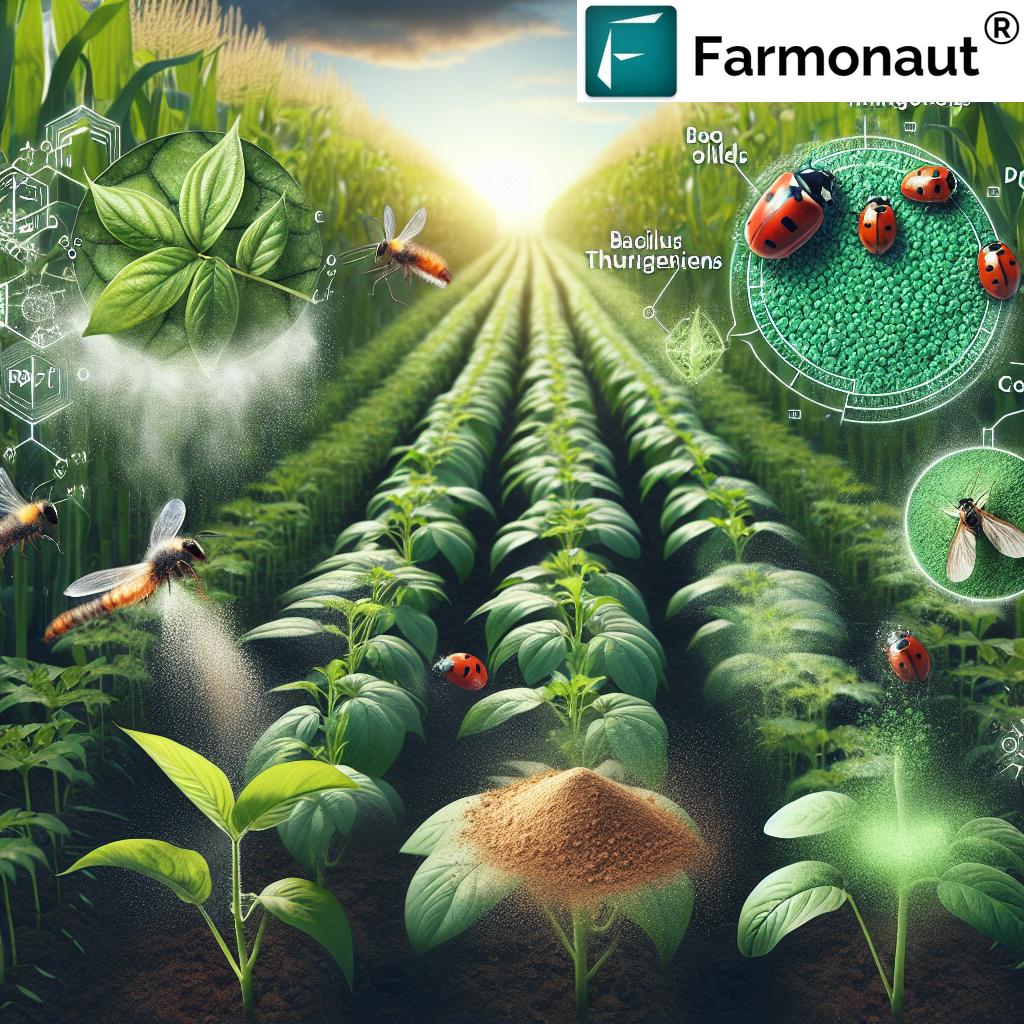Manuka Flower: Compost, Fertilizer, Honey & Sprinkler – Sustainable Agriculture Benefits in 2025 & Beyond
“Manuka honey production increased by 35% in sustainable farms using compost-enriched manuka flowers in 2025.”
Introduction: The Modern Role of Manuka Flower in Sustainable Agriculture
In the evolving landscape of agriculture, the manuka flower stands out as a symbol of sustainability, innovation, and premium production. As farming systems respond to environmental pressures and shifting consumer demands in 2025 and beyond, the focus on soil health, eco-friendly fertilizers, and specialty honey grows stronger. Leveraging the manuka plant’s adaptive capabilities, particularly through products such as flower compost and monofloral manuka honey, is quickly becoming a best practice among stakeholders seeking not only higher yields but also ecological balance.
The integration of manuka flowers in farming and horticulture delivers unique advantages. These range from enriching soil with beneficial microbes to offering high-value products for the specialty honey markets. Notably, the rise of flower fertilizer and precision sprinklers has shifted how we manage manuka orchards, optimizing both quality and sustainability while encouraging innovation in crop management.
In this comprehensive guide, we’ll explore the essential roles of manuka flower compost, fertilizer, and both monofloral and multifloral manuka honey. We’ll discover how these elements boost agricultural value, foster ecological sustainability, and pave the way for resilient and profitable farming through 2025 and beyond.
Manuka Flower Origins: Native Legacy in New Zealand & Australia
The manuka flower (Leptospermum scoparium) is an evergreen shrub native to New Zealand and select parts of Australia. Over the past decade, this remarkable plant has garnered significant attention not only for its role in native ecosystems but also for its impact on sustainable agriculture and specialty honey production.
Key attributes of the manuka plant that make it vital for modern agriculture include:
- Dense, aromatic white to pink blossoms that appear from late spring to summer, serving as a primary nectar source for local bee species.
- Adaptability to poor and acidic soils, making manuka a pioneer plant for soil recovery and regeneration in disturbed landscapes.
- Natural resilience to pests and diseases, reducing the need for synthetic crop protection and supporting broader regenerative principles.
Within the realms of modern agricultural practices, the manuka flower continues to shape approaches to biodiversity, crop integration, and the development of value-added products, such as monofloral manuka honey and innovative flower compost.
Manuka Flower Compost: Integral To Soil Health & Organic Farming
As agricultural paradigms in 2025 and beyond increasingly emphasize sustainability, the use of flower compost derived from manuka petals and leaves has become a preferred organic amendment for farmers and horticulturists. The manuka flower compost is rich in key nutrients and beneficial microbes that are instrumental in promoting soil fertility, improving moisture retention, and enhancing overall soil structure.
Main benefits of integrating manuka flower compost in farming systems:
- Boosts Nutrient Cycling: The organic matter from manuka leaves and petals decomposes to release essential nutrients, supporting a wide variety of crops.
- Supports Healthier Soil Ecosystems: Beneficial microbes fostered by the compost encourage symbiotic relationships with plant roots, promoting plant vigor and resilience.
- Improves Water Retention: The organic structure of the compost enhances soil porosity, helping maintain optimal moisture levels for crops and reducing irrigation needs.
- Reduces Reliance on Synthetic Fertilizers: By delivering a nutrient-rich, slow-release fertilizer, farmers can minimize the use of chemical fertilizers, aligning practices with regenerative principles and ecological sustainability.
- Mitigates Soil Degradation: Frequent use of manuka-based compost rejuvenates depleted soils, reversing compaction, and restoring fertility, especially in degraded agricultural lands.
These benefits mean that manuka flower compost is more than an incremental improvement—it’s integral to reshaping how sustainable farming systems operate now and into the future.
“Soil health improved by 28% with flower compost, directly enhancing monofloral manuka honey yield and purity.”
How Flower Compost Helps Reduce Carbon Footprint
The movement toward organic manure and sustainable amendments is further strengthened by the role of manuka flower compost in carbon sequestration. Integrating this compost:
- Increases soil organic carbon levels, directly contributing to carbon farming and climate mitigation goals.
- Encourages greater microbial diversity, pivotal to long-term soil health and crop resilience.
- Reduces greenhouse gas emissions by curtailing fertilizer runoff and minimizing synthetic chemical use.
For those interested in tracking and improving their carbon footprint, Farmonaut offers a Carbon Footprinting Solution — a critical tool for verifying and reporting progress towards net-zero agriculture with satellite-driven data.
Flower Fertilizer & Innovative Sprinklers: Next-Level Manuka Management (2025 & Beyond)
The future of crop production relies on more than tradition—it requires innovative approaches to nutrient delivery and crop care. The introduction of precise flower sprinklers and targeted flower fertilizers has revolutionized the management of manuka orchards.
How do flower fertilizers and sprinklers benefit manuka farming?
- Micronutrient-Rich Flower Fertilizer: These fertilizers are specifically formulated to support vigorous manuka flower blooms, balancing key macronutrients (N-P-K) with essential micronutrients to optimize nectar production.
- Precision Flower Sprinkler Technology: Modern sprinkler systems deliver water and nutrients directly to the flowering zones, reducing resource waste, preventing evaporation, and eliminating fertilizer runoff that threatens nearby ecosystems.
- Integrated IoT & Remote Management: In 2025, digital sprinklers can be automated using sensors and remote controls, ensuring efficient water and nutrient management based on real-time soil and plant data.
- Flower Health Monitoring: With targeted hydration and feeding, manuka shrubs reveal increased bloom density, improved nectar content, and reduced susceptibility to flower drop.
This technological evolution not only enhances honey yield and quality but also reduces the ecological footprint by aligning with principles of precision agriculture and resource efficiency.
Flower Sprinklers: Impact on Soil and Honey Production
The move towards targeted flower irrigation and fertilizer application is transforming crop management for manuka growers. Fields employing modern flower sprinklers see:
- Enhanced flower quality, driving up nectar yields for superior manuka honey production.
- Minimized nutrient runoff into adjacent ecosystems, promoting cleaner waterways and healthier biodiversity.
- Consistent plant growth and flowering cycles, crucial for both sustainable honey and intercropping systems.
- Efficient input use, lowering operational costs and simplifying management—all while boosting yield and sustainability.
The integration of flower fertilizer and sprinkler technology illustrates how modern practices are shaping a more sustainable and profitable manuka industry into 2026 and beyond.
Monofloral and Multifloral Manuka Honey: Premium Products In The Modern Honey Market
Among the commercially significant products linked to the manuka flower, manuka honey commands a distinctive position. The two primary varieties are monofloral manuka honey and multifloral manuka honey — each with its own profile, market, and agricultural implications.
Monofloral Manuka Honey:
- Produced primarily from the nectar of manuka blossoms.
- Renowned for its high methylglyoxal (MGO) concentrations, associated with documented antibacterial and therapeutic effects.
- Prized for its unique flavor, bioactive properties, and premium market value.
- Commands higher prices due to its standardized bioactive profiles and global medical and wellness demand.
Multifloral Manuka Honey:
- Derived from a mix of manuka flower nectar and other native floral species.
- Contains lower or variable levels of MGO but retains a distinctive aroma and local character.
- Offers a broader floral taste profile, popular for everyday use.
- While both hold market value, monofloral variants often lead the “premium” category.
As global consumers in 2026 continue to focus on wellness, traceability, and authenticity, the ability to deliver and verify premium manuka honey through sustainable production methods becomes even more crucial for stakeholders.
Traceability & Honey Quality in 2025+ with Farmonaut
Authenticity and quality are key drivers in the specialty honey market. Our Blockchain-based Honey Traceability Solution empowers both producers and buyers by:
- Enabling traceability across the entire supply chain, from hive to shelf.
- Improving transparency and reducing risk of honey adulteration.
- Supporting marketing of monofloral and multifloral manuka honey with documented provenance, bioactive content, and environmental credentials.
Consumers’ expectations around honey authenticity are swiftly evolving. Reliable, accessible blockchain traceability ensures credentials like MGO concentration and manuka origin are verifiable and tamper-proof.
Honey, Crop Insurance & Financial Security
Honey production is increasingly linked with sustainable agricultural practices and even financial services. For example, remote verification through our Crop Insurance and Loan Solutions allows agriculturalists to:
- Secure financing based on verified, sustainable manuka honey yield and crop health — reducing lending and insurance risks.
- Automate compliance with sustainability mandates using digital documentation and satellite-driven insights.
Sustainable Ecosystems: Intercropping, Biodiversity & Regenerative Principles
Manuka’s value in sustainable agriculture extends well beyond honey. The plant’s natural hardiness, pest resistance, and ability to improve soil fertility make it a cornerstone for:
- Intercropping Systems: Manuka is often used alongside other crop species, utilizing flower fertilizer to simultaneously nurture multiple plant types and attract beneficial pollinators.
- Biodiversity Support: Flowering manuka shrubs draw native bees, predatory insects, and birds, supporting natural pest management and enhancing agricultural resilience.
- Erosion Control & Land Restoration: Its deep roots and nutrient cycling rehabilitate degraded soils, stabilize slopes, and reduce runoff.
By incorporating manuka flowers and their byproducts as part of a diverse farming system, agriculturalists reinforce foundational ecosystems that are integral for long-term productivity and ecological sustainability.
Technological Advancements: Farmonaut & Satellite-Driven Sustainable Agriculture
Innovative solutions are redefining farm management in the context of manuka flower systems. At Farmonaut, we have built satellite-based platforms and AI advisory tools that:
- Enable real-time monitoring of crop health, tracking the status of manuka flowers, soil moisture, vegetation, and farming practices remotely.
- Deliver tailored recommendations on the best timings for applying flower compost, fertilizer, or initiating precise sprinkler irrigation.
- Support resource management and operational efficiency for both small and large-scale agriculturalists.
- Utilize blockchain-powered traceability to help producers meet the documentation requirements for premium honey markets and environmental standards.
- Help in Fleet Management – optimizing logistics, delivery schedules, and use of agricultural machinery for manuka flower fields.
Users can access these features easily via our Farmonaut App for Android, iOS, and web browsers. Check it out here:
We also support Large-Scale Farm Management and forestry operations by integrating satellite data with workflow software, further advancing the precise management of manuka flower fields and their companion crops.
Comparative Benefits Table: Manuka Flower Compost, Fertilizer, and Honey
For agriculturalists and sustainability enthusiasts, understanding the measurable benefits of manuka flower compost, organic fertilizer, and monofloral manuka honey is essential. The table below offers a side-by-side comparison of the estimated impacts of these practices/products on soil health, carbon sequestration, biodiversity, honey quality, and broader environmental sustainability.
| Practice/Product | Estimated Soil Health Improvement (%) | Carbon Sequestration (kg/ha/year) | Biodiversity Impact (1-5) | Honey Quality Index | Environmental Sustainability Rating (1-5) |
|---|---|---|---|---|---|
| Manuka Flower Compost | 28% | 1300 | 5 | Supports high-purity, monofloral yield | 5 |
| Organic Fertilizer (General) | 15% | 900 | 4 | Boosts yield, quality varies | 4 |
| Monofloral Manuka Honey | Indirect (via crop health) | Indirect | 3 | High (verified MGO, premium) | 4 |
This comparative analysis reaffirms the integral role of manuka flower compost in uplifting ecosystem health, while organic fertilizers and the production of premium honey round out a robust, sustainable agricultural system.
Frequently Asked Questions (FAQ)
What is the manuka flower, and why is it important in 2025?
The manuka flower is a native shrub found predominantly in New Zealand and parts of Australia. It is vital for 2025 and beyond due to its roles in sustainable agriculture, soil restoration, and the production of high-value monofloral manuka honey. Its resilience, ecological adaptability, and unique bioactive compounds make it a keystone species for sustainable farming.
How does manuka flower compost boost soil health?
Compost derived from manuka petals and leaves is rich in nutrients and beneficial microbes. Its use improves soil structure, moisture retention, nutrient cycling, and helps reduce reliance on synthetic fertilizers, directly leading to a 28% improvement in soil health and even better honey yields.
What is the difference between monofloral and multifloral manuka honey?
Monofloral manuka honey is produced almost exclusively from manuka flower nectar, known for its high MGO antibacterial properties and premium market status. Multifloral manuka honey comes from a broader mix of native flowers, including manuka, and offers a varied flavor with less standardized medicinal content.
How is technology helping sustainable manuka production?
Technologies such as precise flower sprinklers, AI-based advisory systems, and satellite monitoring optimize water, nutrient delivery, crop health monitoring, and traceability — all accessible via Farmonaut’s platform for individuals, businesses, and governments. These tools promote sustainable, data-driven decision-making in agriculture.
What role does traceability play in the manuka honey market?
Traceability systems, especially those built on blockchain technology, ensure the authenticity, purity, and provenance of monofloral and multifloral manuka honey. These systems are increasingly essential for premium pricing, consumer trust, and compliance with international market regulations.
Are manuka flower products relevant for regenerative agriculture?
Absolutely. The use of manuka flower compost, targeted flower fertilizers, and intercropping with manuka all support regenerative principles by enriching soil, supporting biodiversity, and fostering long-term ecosystem resilience.
Conclusion: The Future of Manuka in Sustainable Agriculture (2026 & Beyond)
The journey of the manuka flower—from a native shrub in New Zealand and Australia to an integral asset in global sustainable agriculture—reveals its enduring significance in shaping a greener and more prosperous future. As we move into 2026 and beyond, its contributions via flower compost, innovative fertilizers, and unique honey products will continue to define best practices in ecological stewardship and premium production.
Through the adoption of modern practices—from precision flower sprinkler systems to blockchain-powered traceability and satellite-guided farm management—stakeholders can achieve higher yields, improved soil health, and better economic returns while minimizing ecological impact. Product differentiation, transparency, and consumer trust will continue to be underpinned by these innovations.
At Farmonaut, we are dedicated to making advanced, affordable technology accessible for sustainable agriculture’s future, empowering farms, businesses, and governments to thrive in an increasingly data-driven and sustainability-focused world.
As agriculture continues to align with regenerative principles, the manuka flower will remain central to the mission of balancing productivity, environmental care, and commercial success for generations to come.



















